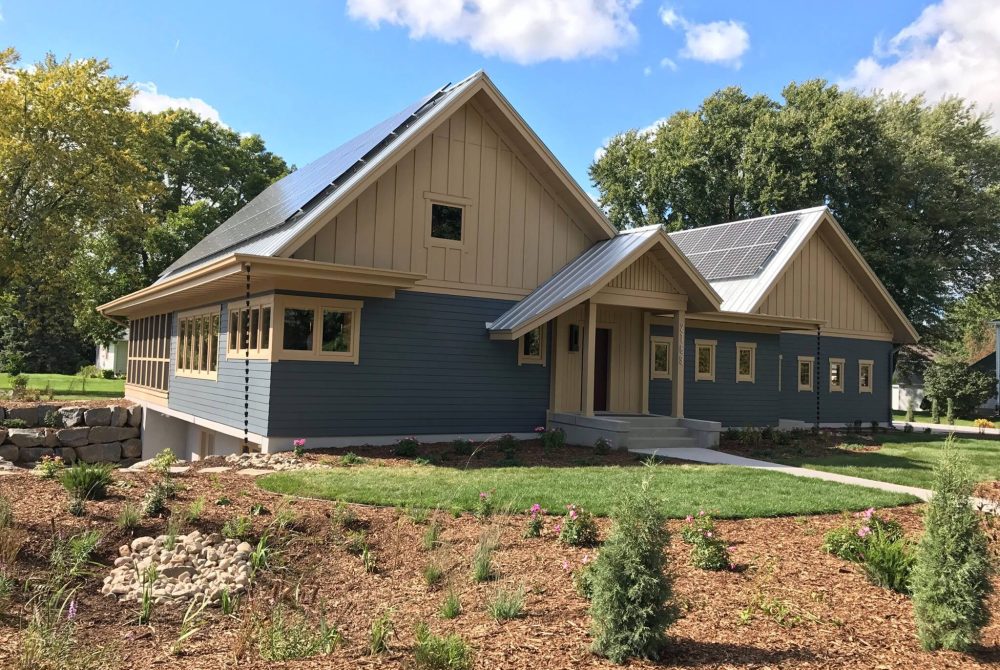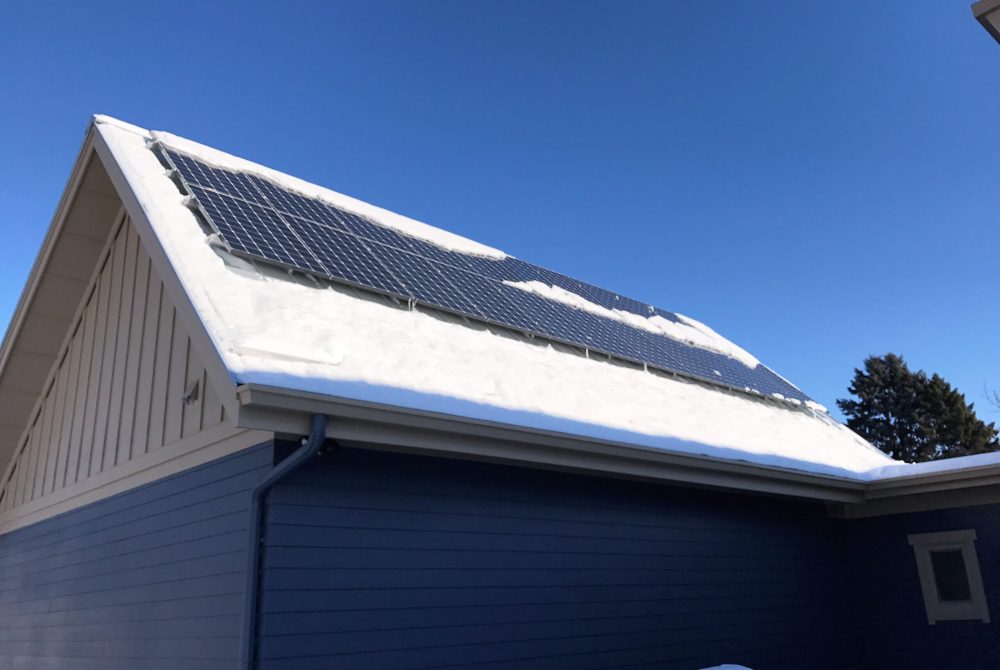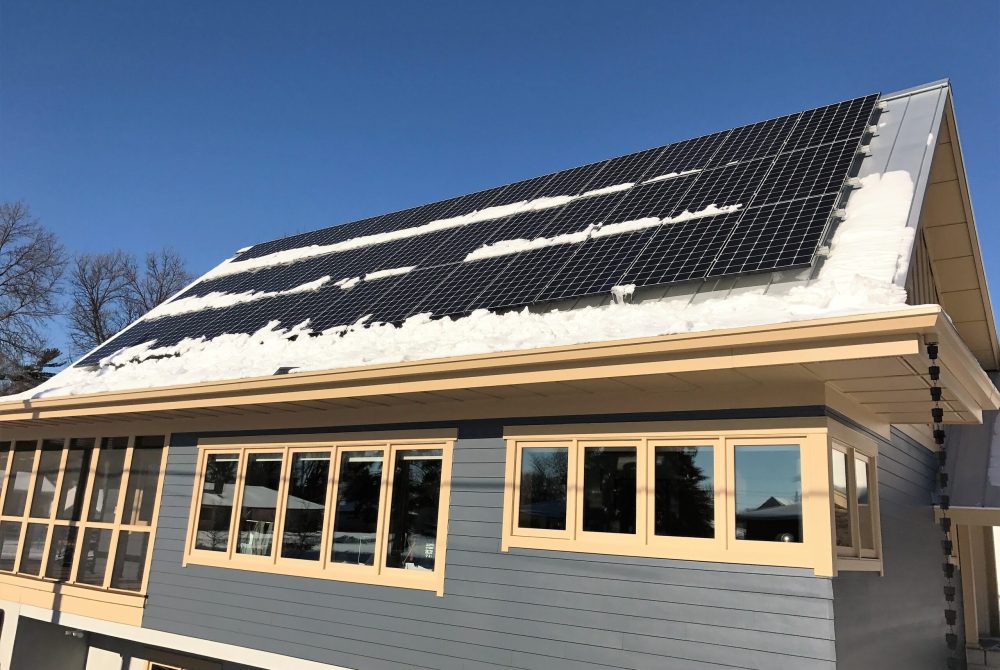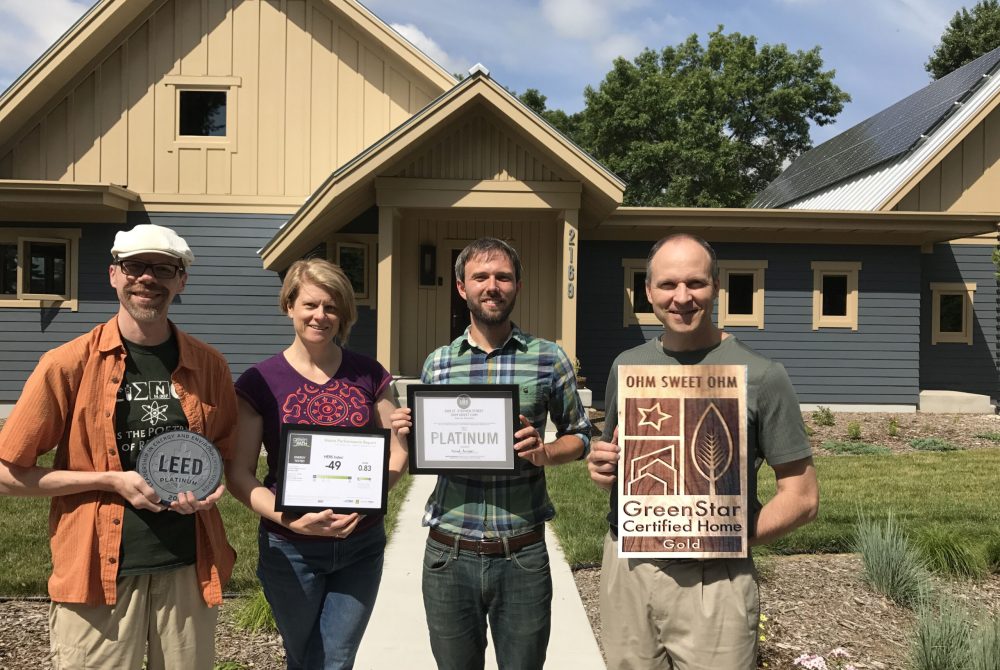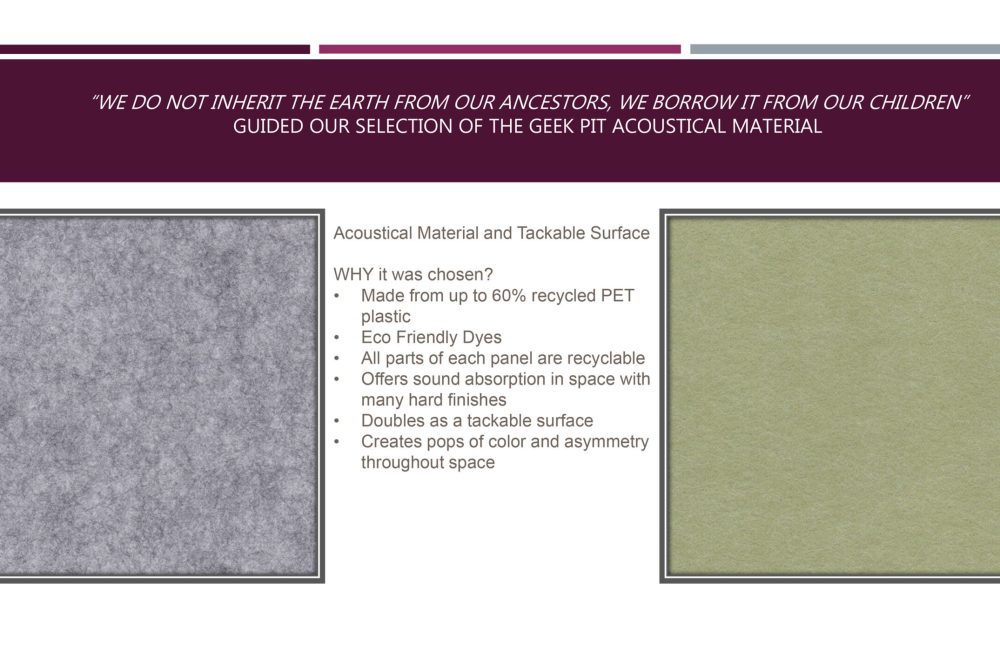| Ohm Sweet Ohm is designed to produce as much energy as the household uses on an annual basis. This includes the house as well as transportation. The power is all electrical, no natural gas is used (there isn’t even a natural gas service line to the house). We wanted to be able to age in place in this house. We also gave heavy preferences to local products and materials. Minimized water use, inside and out. Another key was both a healthy and comfortable space that was not larger than it needed to be.From July 2016 to August 2017 this home produced 8,000 killowatt hours of energy more than it used while also powering to electric cars.
You can take a virtual behind the scenes tour with the homeowners and project team here! CEU’s available |
| Give us success stories as well as lessons learned |
Proper planning in the design phase paid off incredibly well. Monitoring during the build did catch a few small issues before they could become big issues. Having the architect, general contractor, interior designers, landscapers, working together helped immensely. What lessons did we learn? Expect the unexpected! Nothing ever goes completely as planned. Stay involved and correct issues as soon as they are discovered. Stay calm and remain flexible!
|
| Tell us what is unique or innovative about this project |
| We considered all our energy use, including our electric cars, in this project. Eliminating natural gas (in our region of the country natural gas is very prevalent) completely allowed a much tighter shell, and improved health and safety |
| Any special thermal envelope, insulation or passive heating & cooling details? |
| Walls are comprised of a 2×4 stick frame, a 3.5 inch gap and another 2×4 stick frame. Insulation is mostly recycled cellulose with some spray foam at corners or for added sound dampening. We have many southern facing windows so we get excellent passive solar heating in the winter. Dark porcelain tile absorbs the sunlight during daylight hours and releases that heat hours after sunset. Roofline provides shading over the windows in the summer, but allows in direct winter sunlight. Main floor is cantilevered over lower floor, providing shading in the summer, but again allowing winter sun to warm the concrete floor downstairs. The design team worked closely with the window manufacturer to specify windows with a higher Solar Heat Gain Coefficient (SHGC) where they would help with the passive solar heating & cooling strategies. Fixed and operable windows were thoughtfully placed to take advantage of the improved energy efficiency attributes of the fixed windows as much as possible and still allow for effective passive cross ventilation when outdoor temperature and humidity is conducive for that.Careful attention to details during design and construction minimized air leaks. Thus the home tested at the very low leakage rate of .05 CFM50 per square foot of building shell. |
| Any special HVAC systems worth mentioning? Describe them |
| We have 14 100’ vertical geothermal wells in our back yard. This provides heat and cooling for the house as well as all our domestic hot water needs. Air duct work is of different sizes depending upon the size of the room and length of run (rather than one size fits all). A high efficiency Energy Recovery Ventilator (ERV) maintains optimal fresh air exchange. Exhaust air from bathrooms, is routed through the ERV for improved energy efficiency and near silent operation. |
| Explain your water conservation strategies |
| We used low flow faucets and showerheads everywhere except the laundry room and kitchen. In the yard, we designed the yard to be able to absorb and filter all rain that falls on both the permeable and impermeable areas as well as taking in additional water both from a county road on our south side as well as the city street on our east side. To do this we incorporated 4 rain gardens, each in a quadrant of the yard. Our sump pump empties out into a rain garden. |
| Explain your materials & durability strategies |
| Materials, wherever possible, came from local areas. Some tradeoffs were occasionally made to favor more durable materials, however, most of the time no tradeoffs were needed. This included both the house and landscaping. We also favored materials with a high percent of recycled material. The best of all worlds was when we could get a local, recycled, very durable product. We hit on a few of these, but this wasn’t always possible. As an example, we used a steel roof, which required fewer roof penetrations for the solar, is extremely durable, is local, and is completely recyclable. (I included a photo of one of the items our interior designers researched for us. They looked into not only the product itself, but the manufacturing and company ethos. They did this for dozens of products, from paint, to chairs, to our walk of mats which are recycled fishing nets!) |
| Detail the health and indoor environmental quality benefits |
| Low or No VOCs was a very high priority! We used drywall which absorbs VOCs for as long as 75 years (https://www.certainteed.com/drywall/airrenew/). Paint is water based (which has lower VOCs and allows the drywall to do its thing). In addition to the passive solar/thermal mass advantage of the tile in the southern rooms, we also went with the same tile throughout the house. Removing carpet, except for a couple area rugs, has improved our environmental quality. Our allergies bother us much less than they did before moving in. |
| Tell us about your place or location strategies |
| Location of the house is 1.5 miles from work and 15 miles closer to almost anywhere we would typically travel outside our old neighborhood. This lowered the energy used in transportation dramatically. Also, even for the short trips, the distance is typically less. Our old grocery store was 5 miles away, the new one is 2 miles.How about costs?
Building SQ. FT.
—> House (finished & conditioned) 2,434 TOTAL SITE 20,990
—> Garage and Link (finished, insulated but not conditioned) 1,139
—> Screen Porch & Entry Porch (finished but not conditioned) 325 BLDG FOOTPRINT 1,288 main conditioned
Total Building SF 3,898 1,139 garage and link
Building Cost per SF $228 280 screen porch
45 entry porch
Landscape TOTAL 2,752
—> Softscape (plantings, retaining wall, rain gardens, crushed granite path) 16,458
—> Hardscape (concrete driveway, sidewalk, entry steps) 1,780 CONC. HARDSCAPE 222 front sidewalk & steps
Total Landscape SF 18,238 37 west steps & landing
Landscape Cost per SF $20 17 link steps & landing
1,504 driveway
TOTAL 1,780
SITE SOFTSCAPE 16,458 |
|

